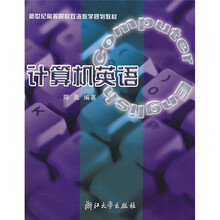Part Ⅰ COMPUTER SYSTEM
Chapter 1 Inside the PC
1.1 The Three Main Parts
1.2 The System Unit
1.2.1 The Logic System
1.2.2 The Display System
1.2.3 The Storage System
1.2.4 The Input/Output System
1.2.5 The Communications System
1.2.6 The Five Systems as a Whole
1.3 The Display
1.4 Input Devices
EXERCISES
Chapter 2 Operating System
2.1 Summary
2.1.1 The Purposes of Development
2.1.2 Batch Systems
2.1.3 Multiprogramming
2.1.4 Operating Systems for the PCs
2.1.5 Parallel Systems
2.1.6 Real-time Systems
2.1.7 A Perspective on the Present
2.2 Windows Server 2003 Core Technologies
2.2.1 A Highly Dependable Platform
2.2.2 A More Productive Platform
2.2.3 A Connected Platfolrm
2.2.4 An Economic Platform
2.3 Linux System
2.3.1 What IS Linux?
2.3.2 Linux and UNIX
2.3.3 The Linux Kernel
2.1.4 The Basic Linux System
EXERCISES
Part Ⅱ COMPUTER PROGRAMMING
Chapter 3 An Overview of the C Programming Language
3.1 Summary
3.1.1 The Origins of the C Language
3.1.2 The Standard for C
3.2 A Middle-level Language
3.3 A Structured Language
3.4 A Programmer’s Language
EXERCISES
Chapter 4 The Turbo C Environment
4.1 The Turbo C Integrated Programming Environment
4.1.1 Executing Turbo C
4.1.2 The Main Menu
4.1.3 The Edit and Message Windows
4.1.4 The Hot Keys
4.2 Using the Turbo C Editor
4.2.1 Invoking the Editor and Entering Text
4.2.2 Deleting Characters and Lines
……
Part Ⅲ DATABASE MANAGEMENT SYSTEMS
Chapter 5 Introduction to Database Systems
Chapter 6 Professional Points of a DBMS
Part Ⅳ NETWORKING
Chapter 7 Introduction to Networking
参考文献

 缺书网
缺书网 扫码进群
扫码进群





